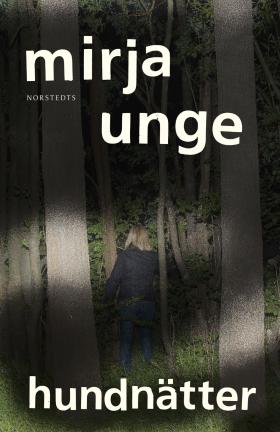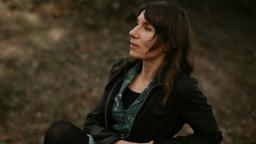
Hundnätter
(Dog Nights)
by Mirja Unge
reviewed by Margaret Dahlstrom
Mirja Unge is an acclaimed author of novels, short fiction and drama. Since the publication of her first novel in 1998 she has won numerous literary prizes and awards in Sweden. Dog Nights is her fifth novel, and has been well-received by critics and reviewers.
The narrative focuses on Nadja, a young woman who returns to her home town after years of living in the city. Superficially, the town seems hardly changed, but as she re-connects with people from the past she finds some are much altered, for better or worse. Nadja is scarred by a traumatic incident in her teens and suffers considerable anxiety. As her memories surface the anxiety grows.
The dog of the title seems to embody this anxiety. Nadja is often aware of a hostile dog behind her or somewhere nearby, most often at night. One friend dismisses it as a figment of her anxiety. But there is in fact an actual dog and at times others with her also see, hear or sense it. A neighbour tells her there is a problem dog in the town. Nadja is confronted by a dog which is loosely attached to someone she has known from earlier; she believes, and it seems likely, that this is the town’s troublesome dog and the one which haunts her.
This brief account seems quite straightforward, but Unge requires considerable effort from the reader to get to this point. The reading experience feels like doing a jigsaw, but without the option of starting by assembling a frame. The starting piece is clearly Nadja herself, the narrator-protagonist. Subsequently, characters enter the narrative without introduction or backstory, and the reader needs to work out their position in relation to Nadja and the community. As more information is gradually provided, the puzzle takes shape, but the reader never does get to piece together a frame – this is a multi-dimensional puzzle, stretching back to events of the past, which fall into place as the present picture emerges, as well as sketching indications of what may lie ahead for some of the characters.
Another challenge for the reader is the writing style. Unge uses very little punctuation – there are full stops (although not as many as this former teacher would have liked), but only a sprinkling of commas and no other marks or pacing. This may represent the state of Nadja’s mind, or add to the atmosphere of the novel, but it often makes a sentence (and there are some very long ones) unclear or ambiguous, and it is sometimes necessary to re-read and mentally insert punctuation, simply to be sure of having understood. It does contribute to the very distinctive and memorable narrative voice.
There is a strong Gothic feel to the narrative. The apparent threat of the dog, much of the action playing out at night, and the somewhat claustrophobic feel of the town, are all parts of the striking sense of darkness that dominates. Anxiety and troublesome dogs aside, there is an undercurrent in the town of something unspeakable. Everyone is aware of it but no one talks about it, and when Nadja notices she is repeatedly advised to keep out of it. On some occasions she is physically intimidated or threatened, and reminded that she has been away for years and is in no position to pass judgement or take a stand now that she is back.
There is a link between Nadja’s anxiety and the undercurrent in the town. Male violence is the source of both: Nadja’s teenage experience involved sexual violence by some of her male classmates. Her mother did not let Nadja take up the counselling and support offered her, and her anxiety grew. The incident was badly handled by the school and the town; years later, what bubbles beneath the surface is also identifiable as male sexual violence.
These are very relevant contemporary issues: male violence that is tolerated, excused or ignored, can have profound and lasting repercussions for individuals and the communities involved. This is a powerful and memorable novel, which will strongly affect many readers.

Hundnätter
Norstedts, Sweden, 2024
290 pages
Foreign rights: Fanny Birath, Norstedts
Nominated for the 2024 August Prize for fiction
Mirja Unge is an acclaimed author of novels, short fiction and drama.’s novel Jag går och lever ('Getting On With It') was reviewed in SBR 2018:1.
